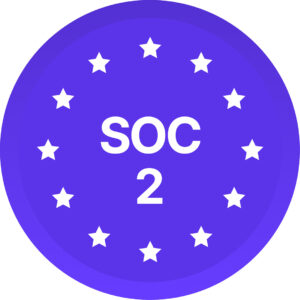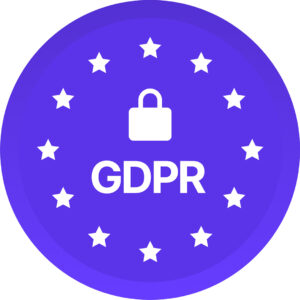The 2020 killing of George Floyd has had a reverberating impact, prompting more organizations to take up the mantle in their commitments to their Diversity, Equity, and Inclusion (DEI) initiatives. Organizations are being forced to take a hard look at how they support a diverse workforce. However, we still have a long way to go as new roots are planted and old, prejudiced policies and procedures are uprooted.
Let’s take a look at why doing DEI right matters to the sustainability of your organization and some best practices you can implement to secure your company’s place in our increasingly interconnected future.
Why Is DEI in the Workplace So Important?
There is a cross-industry consensus that promoting DEI in the workplace cultivates various benefits. Workplaces that value a range of employee experiences and skill sets stemming from a diverse labor force experience more innovation, creativity, and collaboration to tackle modern problems in a globalized society.
- Companies in the top quartile for gender diversity on executive teams are 25% more likely to outperform on profitability, and those in the top quartile for ethnic/cultural diversity are 36% more likely to have industry-leading profitability (McKinsey & Company, 2020).
- Diverse teams are 87% better at making decisions, as diverse perspectives lead to more innovative solutions (Forbes, 2017).
- Organizations with inclusive cultures are 45% more likely to capture a larger share of their market (Harvard Business Review, 2013).
Buy-in across stakeholders increases, with better employee retention, access to a pool of best-talent hires, and an incentivized customer willingness to buy from companies who employ people with whom they can relate. While there is a moral imperative to implement DEI initiatives within your organization, it’s not just about doing the right thing. Support for diversity is also necessary for the sustainability of your organization’s future.
Which DEI Best Practices Should Be Promoted in the Workplace?
Business leaders are facing more pressure from various stakeholders to deliver on their DEI promises to facilitate long-standing change that is not performative. To ensure DEI initiatives are successfully implemented, leaders should infuse DEI throughout their organizations. Use the following strategies to improve the experiences of your diverse workforce population and strategically devise a competitive advantage for your organization.
Make Your Stance Known.
Be explicit and transparent in your company’s stance on its DEI mission and initiatives. Have data readily available that shows your organization’s efforts to support marginalized workforce populations. Train management and leadership to operate using practices that reflect an alignment to your organization’s commitment to DEI.
Promote DEI Practices As Part of Your Business Strategy.
DEI affects all departments and levels of your organization, hierarchically and laterally. Organizations that put DEI practices at the center of their business strategy are more likely to encounter more opportunities and places to succeed. For example, diverse groups offer varying perspectives through collaboration and can recognize different patterns to create products and services that work for a diverse clientele. That allows you to attract new customers while also sending the message to top talent from diverse backgrounds that your company is a welcoming place for them.
Hold Executive Leaders Accountable for Driving DEI Outcomes.
Executives can drive DEI outcomes strategically as a part of your business’s objectives and key results (OKRs). Task them with achieving two sets of DEI results: One OKR should focus on representation — such as hiring, promotion, and mobility outcomes — and the other should focus on creating a day-to-day environment that is safe and engaging by virtue of its equity and inclusion initiatives. Provide leadership with the training and resources necessary to effectively implement your organization’s DEI initiatives. Last, leadership should celebrate the progress of desired behavior and revise parts of the strategy resulting in outcomes that don’t align with the stated goals.
Address Systemic Implicit Bias.
Mitigate systemic inequality caused by implicit bias rather than primarily focusing on eliminating individual bias. Talent management and others who participate in decision-making processes have a significant impact on who joins your workforce population. Thoroughly investigate talent management policies and processes to understand which ones limit opportunity. Then identify what leaders, managers, human resources, and DEI professionals should stop, change, or redesign.
Shift to a DEI Model of Sustainable Behavioral Change.
DEI training should not be seen as a one-and-done annual inconvenience, but a regular part of a company culture that is celebrated and valued. Leadership and employees should build an awareness of the value of diversity that is conducive to sustainable behavioral change. Organizations can support this shift through an enterprise-wide strategic approach. Coach management and leadership to personalize their interactions with their teams so that they’re more likely to foster a sense of psychological safety and make equitable decisions regarding the processes they control, including pay, performance measurement, promotions, and work assignments.
Address Complexities with AI to Make Data-Based Decisions
Your organization is likely acutely aware of the need for a systematic approach to DEI but may feel hamstrung by existing tools that aren’t designed for the nuanced demands of DEI management. AI-powered tools, such as Diversio, are revolutionizing how organizations approach DEI by offering sophisticated solutions that go beyond basic compliance.
Beyond data collection these DEI-focused technology tools excel in analyzing and interpreting data to provide actionable insights. These platforms utilize advanced algorithms to sift through vast amounts of data, identifying patterns and trends that may not be immediately apparent. Realt-time data helps identifying emerging issues and addressing them before they escalate, maintaining a proactive approach to DEI management.
This is how the deep analysis translates into clear, evidence-based recommendations that organizations can act upon.
How Can Diversio Help Your Organization Implement Best Practices for DEI in the Workplace?
Implementing the best practices for DEI in your workplace requires strategic and scalable planning and engagement with employees. Traditional methods often miss the mark in delivering the nuanced insights needed to create an inclusive culture. Diversio’s people and culture analytics platform bridges this gap, equipping organizations with the data and tools to understand and improve employee sentiment, inclusion, and engagement across diverse teams.
When you’re ready to see firsthand how our platform helps companies of all sizes implement the best practice for a diverse, equitable, and inclusive workplace, reach out to us to request a demo.

